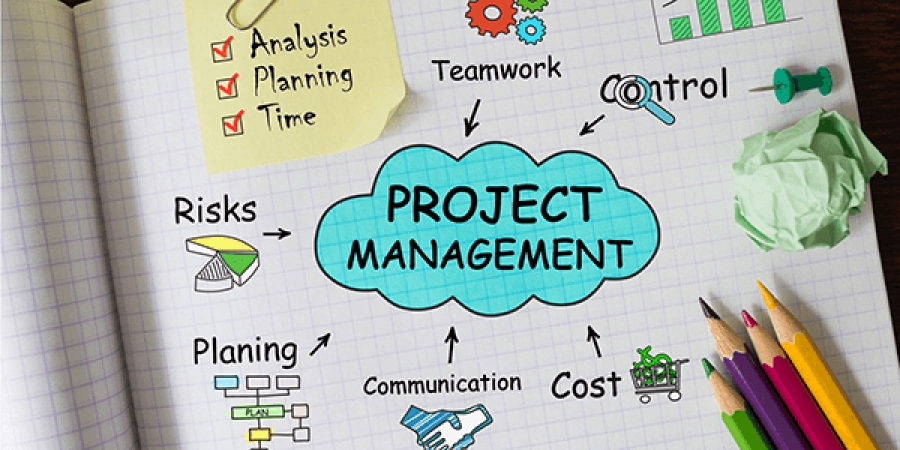People with an entrepreneurial mindset often find themselves toying with an idea for a business that they can start up while still working their day job. Continuing to work your full-time gig while starting up a side hustle isn’t just understandable risk management—it’s also a savvy business move.
According to a study from the Academy of Management, entrepreneurs who kept their day jobs while they started their business failed 33 percent less often than those who went right from 9-to-5 employment to self-employment.
It’s not easy, however, to balance the responsibilities of your job with the needs of a burgeoning business. There aren’t enough hours in a day to do everything you feel you need to. That said, there are some small steps you can take to start your side hustle while working your day job, which will make a possible transition into full-time entrepreneurship a much smoother experience.
Take these steps at your own pace—accomplish them all at once, or go bit by bit:
Write your business plan
It’s not the most exciting part of starting a business, but writing a business plan is one of the most important steps you can take to making your dream a reality.
Your business plan is your roadmap to success: It should include a market analysis, outline of your products and/or services, financial projections, and a marketing and sales plan, among other information.
A business plan is important not just to you and your business partners to help create a vision that you’ll eventually follow to success, but you’ll use it to explain your concept to potential investors and lenders when the time comes to raise capital.
When writing your plan, remember that you aren’t carving it into stone—it can and will change over time, especially as you get closer to actually launching the business. But getting started without an understanding of your market, and your place within it, is a recipe for early disaster.
Start building a financial safety net
Cash flow is often cited as the number one reason why small businesses fail. Especially in the startup stage, when costs are more variable and you’re less likely to have a handle on how to save money without sacrificing quality, it’s easy to hamstring yourself and suddenly lack the means to pay your essential costs.
Saving up a financial nest egg for your eventual investment in your business is a great first step. You should also explore financing tools, such as a business credit card (can you qualify for a card with a 0 percent introductory APR?) or what it would take to apply for an SBA Microloan or other low-interest loan option.
Find a mentor
Small business mentors are one of the open secrets of business success. SCORE reports that small business owners who receive just three or more hours of mentoring say they achieve higher revenues and increased growth.
Find a mentor who also made the transition from full-time employee to business owner, and get his or her advice on how to manage the switch. What resources did they have? Had much money had they saved up? When will you know it’s time to quit? Get answers from someone who has walked the same path—doing so will give you insight, as well as confidence.
Related: 5 Sites That Pay $20 Per Hour To Stay At Home
Make minimum investments in your side hustle’s foundation
There are good ways to invest your money when you’re first starting out, and bad ways. Bad ways include hiring a marketing agency, or hiring an accountant, or paying rent on a commercial space you don’t have imminent plans to use.
The good ways list is short, but it will pay dividends. Here’s a quick list of things you can start spending on right away:
- A basic business URL/website
- Market research strategies like surveys
- Marketing and advertising efforts that are easy to measure (such as Facebook ads)
- An email newsletter and email contact list
Test your idea
As part of your business plan, you’ll identify a target market. Although it would be nice to be able to sell your product to everyone, more realistically you’ll need to settle on a select group of people, such as young women, or retirees.
Now that you know who you’re looking to sell to, it’s time to find out if they’ll actually want your product. If they don’t, it’s time to pivot to either a different demographic or to a different product or service.
This starts by having honest conversations with potential customers. Use surveys that, rather than ask leading questions, actually identify customer pain points. “Would you pay for a service that does ‘X’?” is not a helpful question—people may respond affirmatively even if they don’t plan to actually spend money on your service. “What issues create a bottleneck for you at the office?” will garner real responses you can use to inform your decisions.
Whether you use online surveys (SurveyMonkey is a popular option), have phone conversations, or create social media polls, your goal should be to find your customers and get their input. Forgo asking your parents or friends—they can’t tell you what you need to know.
Consult with a lawyer to ensure no legal entanglements
Although it may be too early in the game to enlist an accountant (most of your financial obligations can be fulfilled with quality accounting software), a lawyer is likely a good investment.
A lawyer can be helpful when you have questions about your employment agreement with your current employer. Are you looking to strike out on your own in a field similar to the one you’re in? If so, a lawyer can help you look through your various agreements and ensure you’re not violating any by starting a competing business, or a side hustle born out of an idea related to their business.
Build an MVP
A minimum viable product, or MVP, is the simplest and most basic version of your idea that you can actually sell to customers. It’s by no means your finished version, but rather a proof of concept that you’ll continue to refine.
The value of an MVP isn’t that you can start selling a cheap version of your idea, but that it establishes a baseline of costs—cost of production, cost to ship, cost to obtain customers—that you can then use to calculate your ROI and see if you can create a profitable venture.
As they say in the startup world, done is better than perfect. Getting an MVP ready and receiving validation of it in the form of customer interest is how you know it’s worth investing more of your time and resources into making this the best possible version of itself that it can be—even if that means quitting your day job and devoting yourself to this full time.
It’s becoming more and more accepted for workers to have a side hustle outside of their day job, thanks to the effect the gig economy has had on the larger workforce.
Take advantage of this shift in values to embrace your entrepreneurial spirit and explore your options. By keeping your job until you have a much better sense of whether your idea is proven, and you can make it into a business, you’ll wisely hedge your bet while continuing to hone the work ethic, job skills, and time management abilities that come in handy when you become your own boss.
Source: StartupNation










